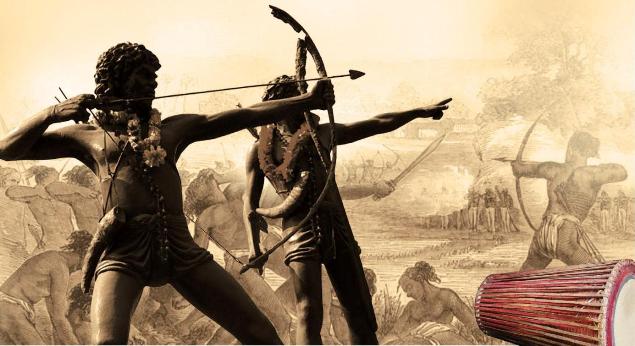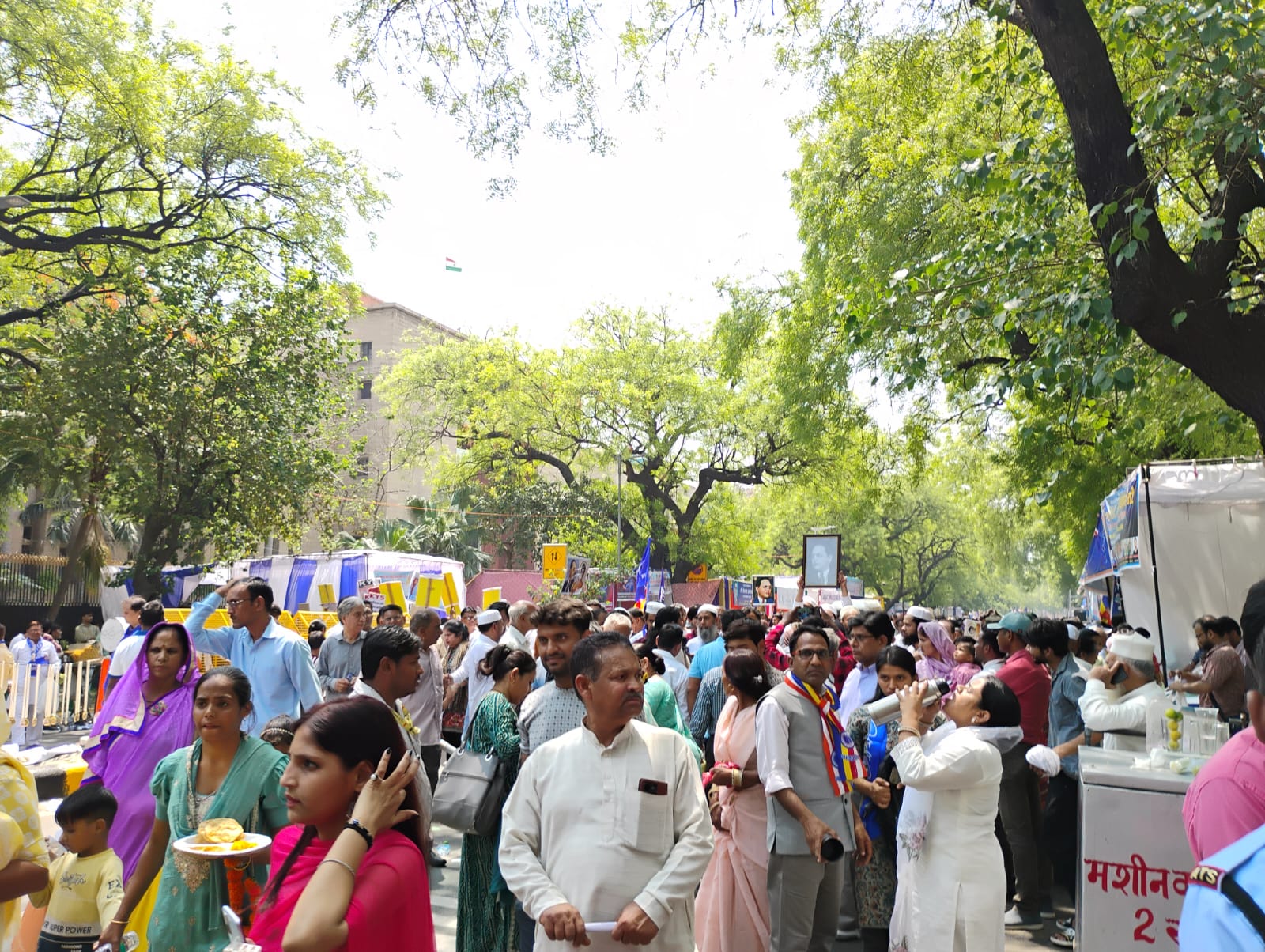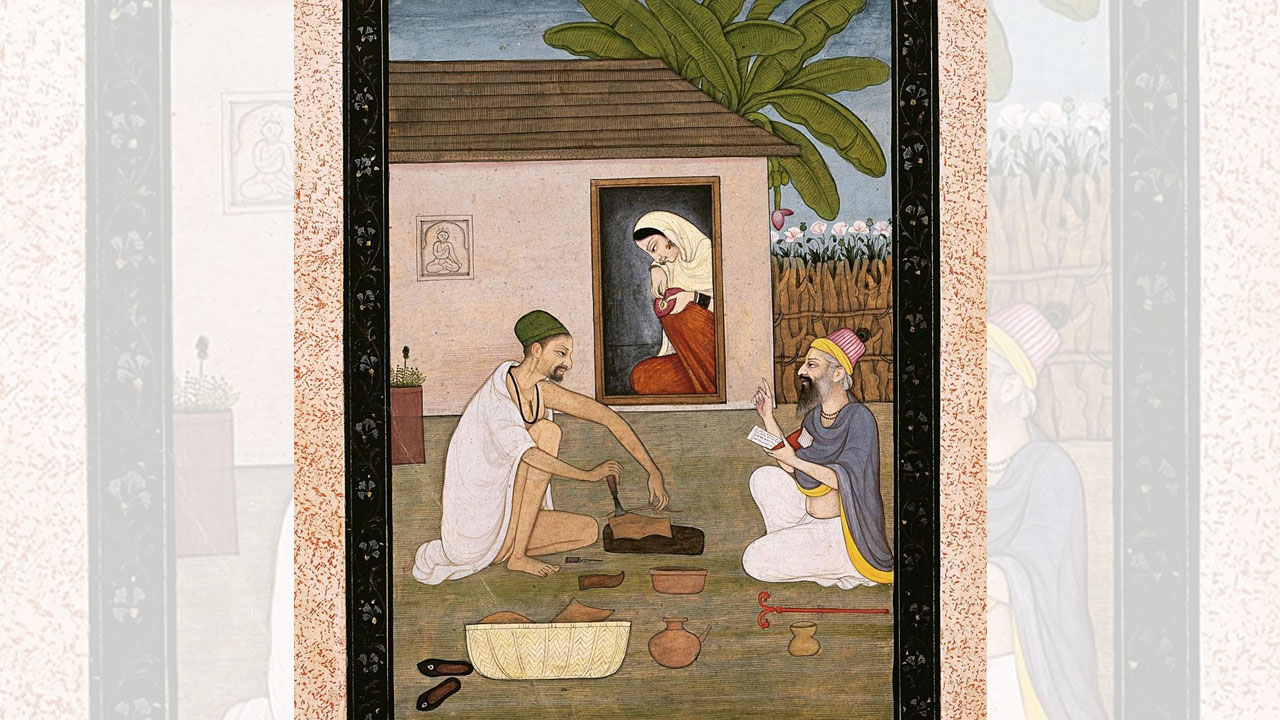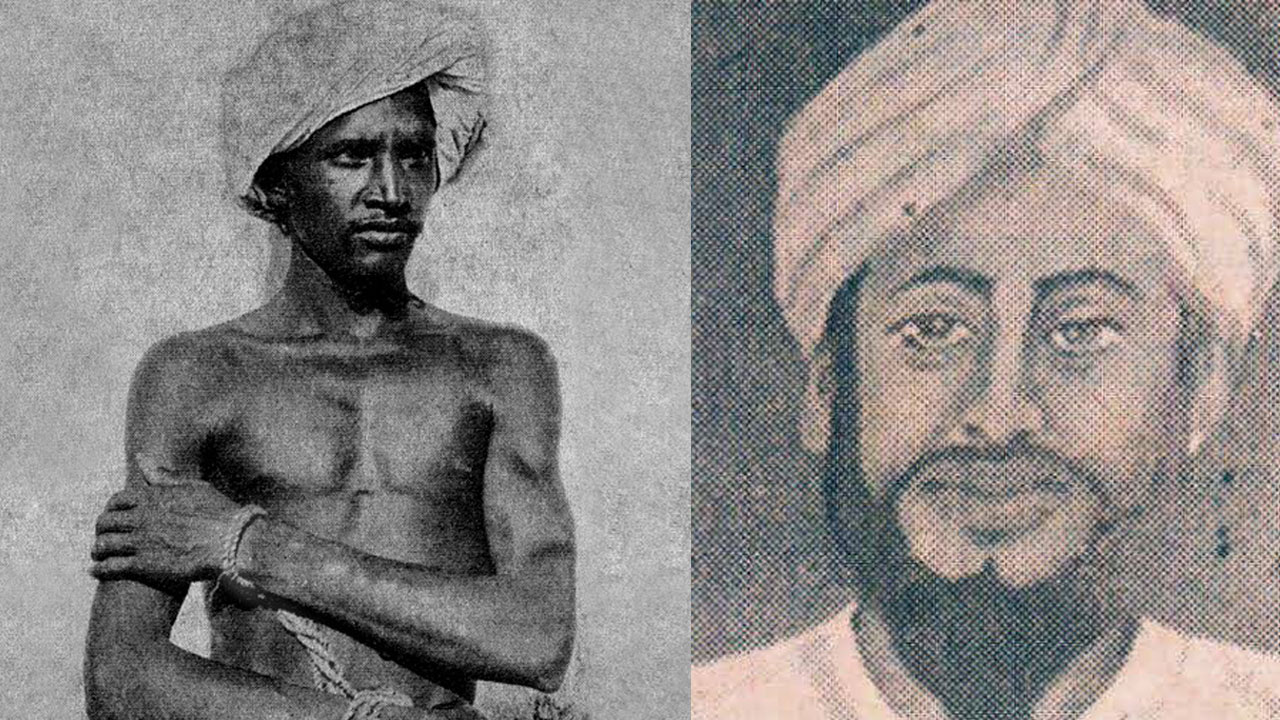Mahishasur has been worshipped in the villages of Bundelkhand since time immemorial. My village has also been witness to it. In my village, Ahirs and Ahirwars (known as Charmakar, Mochi and so on in other parts of the country) together worship Mahishasur, who is also known as Bhainsasur. Whenever any calamity, such as drought, visits the village, a meeting of the villagers is convened and a special ritual is performed to propitiate Mahishasur.

The villagers believe that Mahishasur enters the body of a person, who is then referred to as “Gholna”, and talks to the villagers about their problems through him; they believe that the problems are then resolved within 24 hours. They also believe that Mahishasur drove the bullock cart that carried Durga. How these things became a part of the Mahishasur lore is a subject matter for research. But it seems that they are later interpolations. When I asked the residents of my village why they worshipped Durga even though she had murdered Mahishasur, they had no answer.
Custom of jwara
“Jwara” is used for Mahishasur puja. “Jwara” is the juice of young wheat plants. It is also known as “green blood” and is said to be a potent blood purifier. Besides its medicinal qualities, experts can tell from the jwara how good the crop is going to be. No one seems to know how Jwara became part of religious rituals. While worshipping Mahishasur, the villagers also worship their kul devis (female deities of clans). Every family has its own kul devi with a unique name. This indicates that India has an old tradition of matriarchal rituals. But for some reason, this practice disappeared.
Norta and Durga Puja
During the Durga Puja, an eight-day festival called Norta is also celebrated in Bundelkhand. It is also called Soatake in some places. Only unmarried women celebrate this festival. On the first day, a human-like figure is created with soil brought from outside the village. The figure is stuck on the wall of the house. The women get up early in the morning and pray to this figure. Before praying, the floor of the house is plastered with cow dung and clay. Every day, a chouka (a designated place for performing the puja) is set up. Thus eight choukas are created in as many days. What is left over after plastering the floor is not thrown away but is just moved a little further away every day. On the eighth day, a special puja is performed. A lamp is placed inside an earthen pot with a hole in it. This pot is known as dhidiya. The girls go around the village, balancing the pot on their heads, and singing songs of praise and lament. Once they get married, the women stop celebrating Norta. While the Norta concludes on the Ashtami, Durga Puja ends on Navmi.
Bada Dev, the vanquisher of Durga
The Gond tribe are traditional nature-worshippers. Though the times have changed, the sun, the moon and plants and trees are still their objects of worship. They do not build temples. While leaving their homes in the morning hours, they invoke their ancestors and their gods. Bada Dev has the pride of place in their pantheon. They first bow their heads before Bada Dev. These gods are also worshipped during family rituals and harvest, when an adversity visits the family or when there is a problem in childbirth. The saaj tree is considered a symbol of Bada Dev. The Gonds do not worship fire. They don’t hold havans either. The puja of Bada Dev is prohibited on days of lunar and solar eclipses. Similarly, menstruating women are also not allowed to participate in the puja. They are considered impure. When the housewife is menstruating, food is not cooked in the home. Traditional social beliefs are behind this tradition.
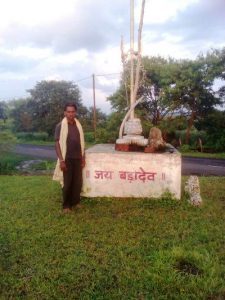
Bada Dev in folk lore
A popular tale has it that once when Bada Dev was being worshipped, offended by something, he made saaj tree his abode. The people entreated with him to return to their homes but he refused. Since then, the Tribals’ belief has been that Bada Dev lives on the saaj tree and they worship it. Bada Dev is worshipped as a formless deity and there are no temples dedicated to him. The puja of Bada Dev is performed collectively, either in public places or at homes. Bada Dev is worshipped in the Tribal areas of Madhya Pradesh and Chhattisgarh too and the method of worship and beliefs are almost the same.
Mair Baba
Mair Baba is also worshipped in Bundelkhand. Mair Baba means “My Baba”. All non-Brahmin castes including Bhangi, Chamar, Basor, Kori, Kachhi, Lodhis, Dheemars, Ahirs and other indigenous inhabitants worship Mair Baba. He is also the presiding deity in marriages and is called “Dulha Dev”. An area at the corner of the house in the shape of a square is set aside for Mair Baba. In homes where a marriage is due, the eldest member of the family performs a puja of the deity. In this puja, some symbols are made on a cloth using a mixture of turmeric and oil. The symbols somewhat resemble the pictographic script of the Harappan civilization. A feast is held for all members of the extended family.
Bada Dev and bhav
The Tribals also worship Bada Dev when their cattle are taken ill. They pray to him to cure their cattle. There is no difference between the Bada Dev of the Tribals and that of Bundelkhand. In the Kunwarpura village of Mohangarh Tehsil, Tikamgarh, in Bundelkhand, the Ahirs (Yadavs) worship Bada Dev. The only difference in the worship is that while the Tribals sacrifice a goat, the people of Bundelkhand don’t. After the puja, the priest invokes the gods by saying, “O’ gods, come and let us have a darshan of you.” All the people present stand up with folded hands, waiting for Bada Dev to appear. The process of Bada Dev entering the body of a person is called “bhav”, while the person concerned, like in the case of Mahishasur as mentioned above, is called “gholna” in Tribal areas and “Barua” in Bundelkhand. Once the Bada Dev enters the body of the Barua, everyone present hails him and then talks to him about their problems. The Bada Dev suggests solutions to their problems. Women are barred from climbing atop the platform of Bada Dev. When passing by the platform of Bada Dev, women take off their footwear and carry them in their hands. This is seen as a symbol of respect for Bada Dev.
It seems that the Mair Baba of Bundelkhand and Dulha Dev of Gondwana are one and the same. There is no instance of the indigenous peoples worshipping Brahma, Vishnu or Mahesh.

‘Chakna’ tradition
There is another tradition in Bundelkhand called “Chakna” or “Chaakna”. As part of this tradition, all the vigilant residents of the village come together and discuss the security and safety of the village. Chaakna involves building a security ring around the village to stop evil forces from entering. All the residents contribute money for the purpose. Dr B.R. Ambedkar says that Chaakna is a very old tradition, predating the Vedic traditions. All the seniors, elders and priests gather on a new-moon or a full-moon day. Then the gunia, carrying some liquor, and others carrying things needed for a puja, walk through the village throwing small pieces of “athvai” (small puris) on the way. When they reach the “mendi” (border) of the village, they sacrifice a cock or a goat and also offer liquor to the deity. Sometimes, the goat is not sacrificed; only its ears are severed. This is done so that the evil spirits can get food outside the village and do not harm the villagers. It seems that the Aryans used to raid the villages of the indigenous inhabitants. Then, indigenous inhabitants might have started providing food, etc, for them at the border so that they not enter the village. “Chaakna” seems to be a remnant of that tradition – with the earthly need of protection from Aryan raiders gradually being replaced by the belief of protection from celestial wrath and diseases.
Challenge of preserving identity
At present, the indigenous inhabitants are proving unequal to the task of preserving their identity. They have not been writing about their traditions, because of which the protagonists of Aryan culture have been presenting a distorted version of these traditions.
When the Aryans were trying to absorb the culture of the indigenous inhabitants, the latter must have started celebrating Durga Puja even as they continued to worship Mahishasur and celebrate Norta. In Gondwana, the Tribals started worshipping Ram and Hanuman along with Bada Dev. Though the indigenous inhabitants always had a conciliatory approach and were not averse to accepting Aryan traditions, the Aryans either distorted the culture of the indigenous inhabitants or suppressed it. The indigenous inhabitants have been consistently trying to coexist with the Aryan culture by adopting some of its features. This was an endeavour to avoid a cultural war and they carried on in this manner for centuries. But anger and resentment continued to build inside them.
A countercultural movement has been launched of late by celebrating the martyrdom day of Mahishasur and Ravana. An attempt is being made to revive the culture of the indigenous inhabitants. The worship of Bada Dev is becoming increasing common. The emergence of the new media and of social networking websites is helping the culture of indigenous inhabitants re-establish itself. In this era of globalization when the corporates are increasingly dominating every aspect of human existence, it remains to be seen how the culture of indigenous inhabitants would express and manifest itself.
References
- Verrier Elwin, The Baiga, Jiyan Publishing Group, 1986
- O. James, Primitive Ritual and Belief: An Anthropological Essay, https://archive.org/stream/primitiveritualb00jame/primitiveritualb00jame_djvu.txt
- H. Baden-Powell, The Origin and Growth of Village Communities in India, http://socserv2.socsci.mcmaster.ca/econ/ugcm/3ll3/badenpowell/VillageCommunities.pdf
- Kangali, 2011, Pari Kumar Lingo Gondi Darshan (Hindi), Chandralekha Kangali, 48, Ujjawal Society, Nagpur.
- Selected Works of Dr Ambedkar, http://www.delhihighcourt.nic.in/library/articles/may/selected%20work%20of%20Dr%20B%20Rambedkar.pdf
For more information on Mahishasur, see Mahishasur: A People’s Hero. The book is available both in English and Hindi. Contact The Marginalised, Delhi (Phone: 9968527911).
Or, find the book on Amazon: Mahishasur: A People’s Hero (English edition), Mahishasur: Ek Jan Nayak (Hindi edition)
And on Flipkart:
Mahishasur: A People’s Hero (English edition), Mahishasur: Ek Jan Nayak (Hindi edition)


